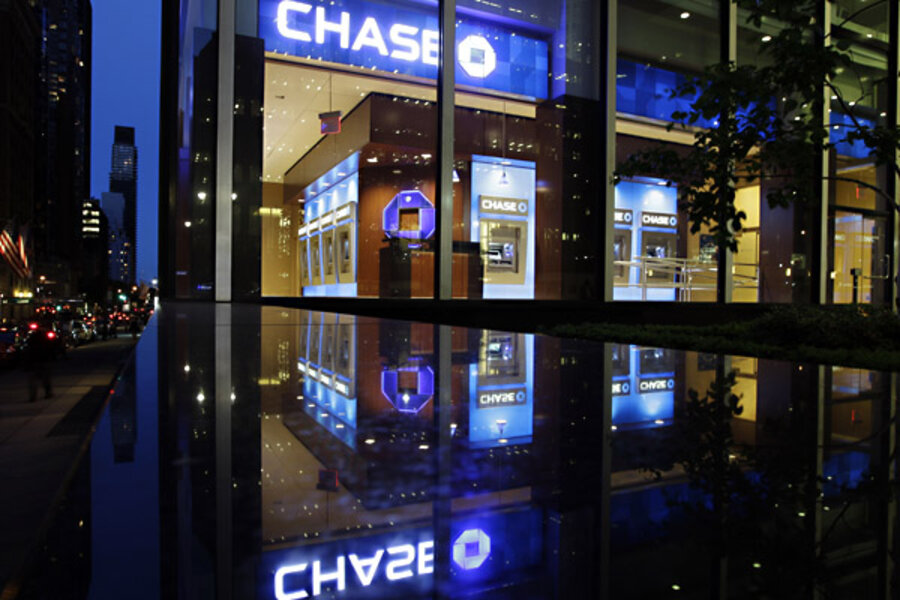JPMorgan collapse: Can we regulate Wall Street now?
Loading...
J.P. Morgan Chase & Co., the nation’s largest bank, whose chief executive, Jamie Dimon, has lead Wall Street’s war against regulation, announced Thursday it had lost $2 billion in trades over the past six weeks and could face an additional $1 billion of losses, due to excessively risky bets.
The bets were “poorly executed” and “poorly monitored,” said Dimon, a result of “many errors, “sloppiness,” and “bad judgment.” But not to worry. “We will admit it, we will fix it and move on.”
Move on? Word on the Street is that J.P. Morgan’s exposure is so large that it can’t dump these bad bets without affecting the market and losing even more money. And given its mammoth size and interlinked connections with every other financial institution, anything that shakes J.P. Morgan is likely to rock the rest of the Street.
Ever since the start of the banking crisis in 2008, Dimon has been arguing that more government regulation of Wall Street is unnecessary. Last year he vehemently and loudly opposed the so-called Volcker rule, itself a watered-down version of the old Glass-Steagall Act that used to separate commercial from investment banking before it was repealed in 1999, saying it would unnecessarily impinge on derivative trading (the lucrative practice of making bets on bets) and hedging (using some bets to offset the risks of other bets).
Dimon argued that the financial system could be trusted; that the near-meltdown of 2008 was a perfect storm that would never happen again.
Since then, J.P. Morgan’s lobbyists and lawyers have done everything in their power to eviscerate the Volcker rule — creating exceptions, exemptions, and loopholes that effectively allow any big bank to go on doing most of the derivative trading it was doing before the near-meltdown.
And now — only a few years after the banking crisis that forced American taxpayers to bail out the Street, caused home values to plunge by more than 30 percent and pushed millions of homeowners underwater, threatened or diminished the savings of millions more, and sent the entire American economy hurtling into the worst downturn since the Great Depression — J.P. Morgan Chase recapitulates the whole debacle with the same kind of errors, sloppiness, bad judgment, excessively risky trades poorly-executed and poorly-monitored, that caused the crisis in the first place.
In light of all this, Jamie Dimon’s promise that J.P. Morgan will “fix it and move on” is not reassuring.
The losses here had been mounting for at least six weeks, according to Morgan. Where was the new transparency that’s supposed to allow regulators to catch these things before they get out of hand?
Several weeks ago there were rumors about a London-based Morgan trader making huge high-stakes bets, causing excessive volatility in derivatives markets. When asked about it then, Dimon called it “a complete tempest in a teapot.” Using the same argument he has used to fend off regulation of derivatives, he told investors that “every bank has a major portfolio” and “in those portfolios you make investments that you think are wise to offset your exposures.”
Let’s hope Morgan’s losses don’t turn into another crisis of confidence and they don’t spread to the rest of the financial sector.
But let’s also stop hoping Wall Street will mend itself. What just happened at J.P. Morgan – along with its leader’s cavalier dismissal followed by lame reassurance – reveals how fragile and opaque the banking system continues to be, why Glass-Steagall must be resurrected, and why the Dallas Fed’s recent recommendation that Wall Street’s giant banks be broken up should be heeded.






